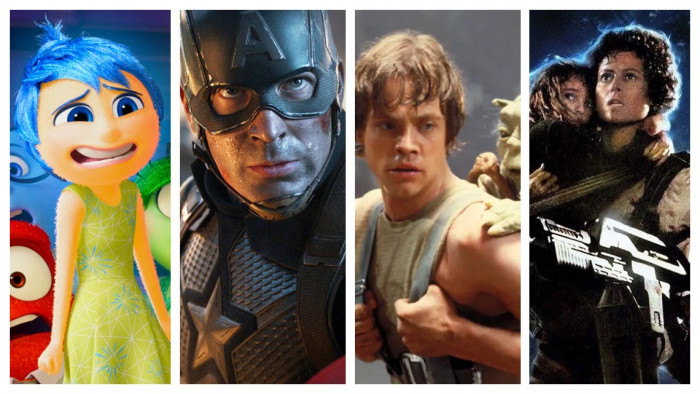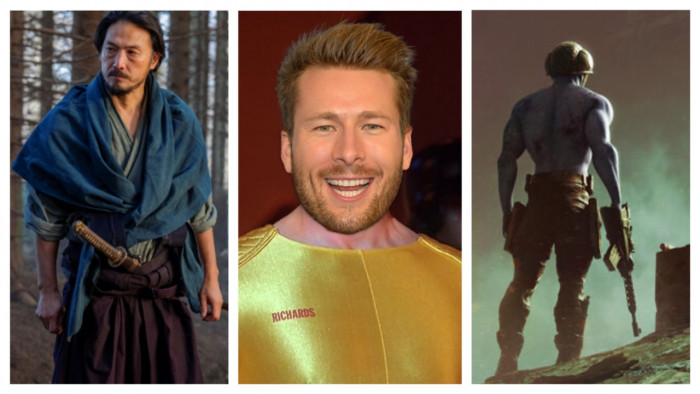They can make or break a film, but are trailers revealing too much?
On 28 November 2014, for 90 seconds (plus buffering time), offices across the world were silent – people wearing headphones, their eyes were fixed intently on their screens, repeating the same mantra to themselves: “Please be good. Please be good.” And then, one minute in, the Millennium Falcon shot into view as Star Wars (Main Theme) kicked in, and grins as wide as their faces spread from person to person.
At the time it was still more than a year away, but no one was in any doubt – Star Wars was back.
That week, the trailer was viewed 58.2 million times. People debated it, they analysed every shot, and they wondered how that new roller droid worked. It was a moment of cultural importance – not quite, “Where were you when Michael Jackson died?”, but up there. And all this for what, in truth, is just an advert. You don’t get that with a Toilet Duck ad, no matter how high the production values are. So, we love trailers. That much should be clear. But watching them is a risky business – especially when you get out of ‘Teaser’ and into full-blown ‘Theatrical Trailer’ territory. And that risk is spoilers. And it’s something that’s been on filmmakers’ minds this summer.
Take the trailer for Terminator Genisys, which – spoiler alert! – revealed a key twist regarding the film’s main villain. To say director Alan Taylor wasn’t thrilled is something of an understatement. And he wasn’t shy about showing it, talking in his round of promotional interviews about “unpleasant conversations” he’d had behind the scenes. And he wasn’t alone – Jurassic World director Colin Trevorrow also got in on the act, telling IGN the trailers show “far more of the movie than [he] would ever have wanted”.
In A World Of Spoilers
It’s long been a fact of multiplex life that comedy trailers will blow the best jokes, but that’s OK – there will, at least, be other ones (you’d hope anyway). But in a culture so wary of spoilers – where long-term friendships have been ruined by loose tongues revealing what happens in Game Of Thrones – why does it happen for such key plot moments?
“It reduces the movie-going experience to consumption. I think the art of trailer editing is vanishing.” Not the words of a director feeling he’s been wronged, but those of Oscar-winning actor Christoph Waltz speaking recently. The thing is, he appears to be labouring under the misapprehension it’s a modern condition. In truth, from the earliest days of film marketing there have been varying ratios of tease and reveal. The very first trailer was actually for a play, showing rehearsal footage of a 1913 Broadway musical and, given it was silent, it wasn’t difficult to preserve some mystery.
But, as the medium matured, wildly differing styles developed – many trailers of the Fifties were essentially digested recaps of entire films. However, savvy distributors and directors worked out that, especially if you were flogging a thriller or horror, it might be best to keep a few secrets.
Master showman Alfred Hitchcock got this implicitly – his trailer for Psycho is a six-minute-plus tour of its sets, where the director discusses the events of the film with just enough detail to let you know you’re in for a shocker, but holding plenty back – and ending with Hitchcock’s implied stabbing for his trouble.
Other directors were keen to get even more creative, and not just to keep their films’ body counts under wraps. Stanley Kubrick, of course, was a pioneer, enlisting Cuban artist Pablo Ferro to create fast-cut trailers for Dr Strangelove and A Clockwork Orange that are mini works of art themselves. Later, the minimalist trailer for The Shining – just the famous shot of the lift doors opening to let out a torrent of blood – would freak people out long before they even knew Jack Nicholson picked up an axe.
However, invention faded as Hollywood became increasingly corporate through the Eighties. The suits didn’t get it, man, and as time went on they really opened the spoiler floodgates: Terminator 2, Cast Away, GoldenEye, Mission: Impossible and more treated their trailers as entire menus, rather than starters. It’s nothing new – Chinatown and Carrie’s trailers both gave the game away, and even the trailer for Hitchcock’s Rope revealed the killers and concentrated mostly on the final minutes of the film – but the increase in information was undeniable.
One notable victim was 1999’s Arlington Road, a tense thriller where Jeff Bridges frets over his neighbour possibly being a mad bomber – its trailer removed any ambiguity whatsoever. Bridges was miffed: he spent much of his DVD commentary grumbling about it. The film’s director Mark Pellington is philosophical about it these days, however: “It’s about control,” he says. “Everybody wants control, from the first frame to the last. The trailer told you a lot, but it wasn’t dishonest so it didn’t alienate people. If you’re selling a different story or a different tone to the actual movie, if they sell it as light when it’s dark, it means they’re afraid of it.”
It was supposed to be a routine advert
London is one of the world centres for trailer production. Like any advertising – and it’s important to keep in mind that’s what a trailer is – a client takes a brief to a creative agency to produce various versions of an idea, which is then refined after feedback from the paying customer. Sam Cryer runs Intermission, the company behind campaigns for It Follows, Spring Breakers and Amy. “It starts out very general,” he says. “Then as you refine it, shots are replaced, and as you get further it can be about making the tiniest changes to sound effects and cutting a few frames here and there. It’s not unheard of to have restrictions on what you can show, which can come from the distributor or the filmmaker. The digital age has transformed how trailers are made – you can create dozens of versions of a single one.”
It’s also changed how they’re viewed: “Trailers are pored over online now,” continues Cryer. “On something like Star Wars, people look in every shot for clues – for these big films, I think they have to be careful what they show, or the final film can lose its entire impact.”
But there aren’t many industries that ask consumers to pay for something they don’t know anything about. The more people know what they’re getting, the more likely they are to buy into it – that’s why we used to have movie stars who were brands, and why we now have brand exercises like Marvel. Remove the mystery, and you at least offer a known quantity to a risk-averse public.
This is where the studio and independent films differ in their approach – the independent sector, stripped of these brands and the need for huge numbers, is far more likely to keep the filmmaker on board, and this is the person most likely to be on the frontline, knowing which parts of the film he feels need protecting.
“The lifeblood of independent studios is their relationships with filmmakers,” says Cryer. “Studios aren’t director-led. They’ve invested however many hundreds of millions of dollars, and their priority is to recoup that. Big directors, like David Fincher or Michael Mann, can have a huge say in their trailers, but generally they work with filmmakers who can be controlled.”
Which brings us back to Colin Trevorrow and Jurassic World. His only previous film was the low- budget Safety Not Guaranteed, and while we can only speculate, you get the feeling he wouldn’t have had the same amount of say in its marketing as, say, Steven Spielberg would have if he’d decided to direct another one. The other important fact to note here is, despite this vocalised scepticism regarding its trailer, Jurassic World delivered huge numbers at the box office: it had the biggest opening weekend of all time. So, in terms of getting people excited, who really knows best?
Latest
Related Reviews and Shortlists


The 10 best war movies of the 21st century









